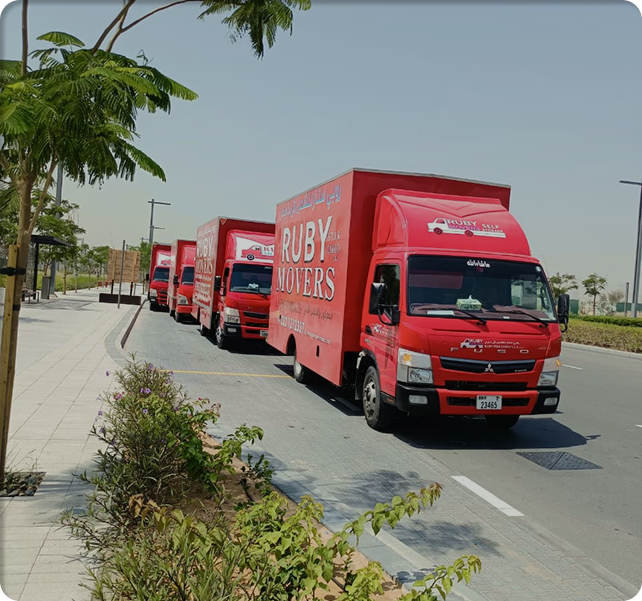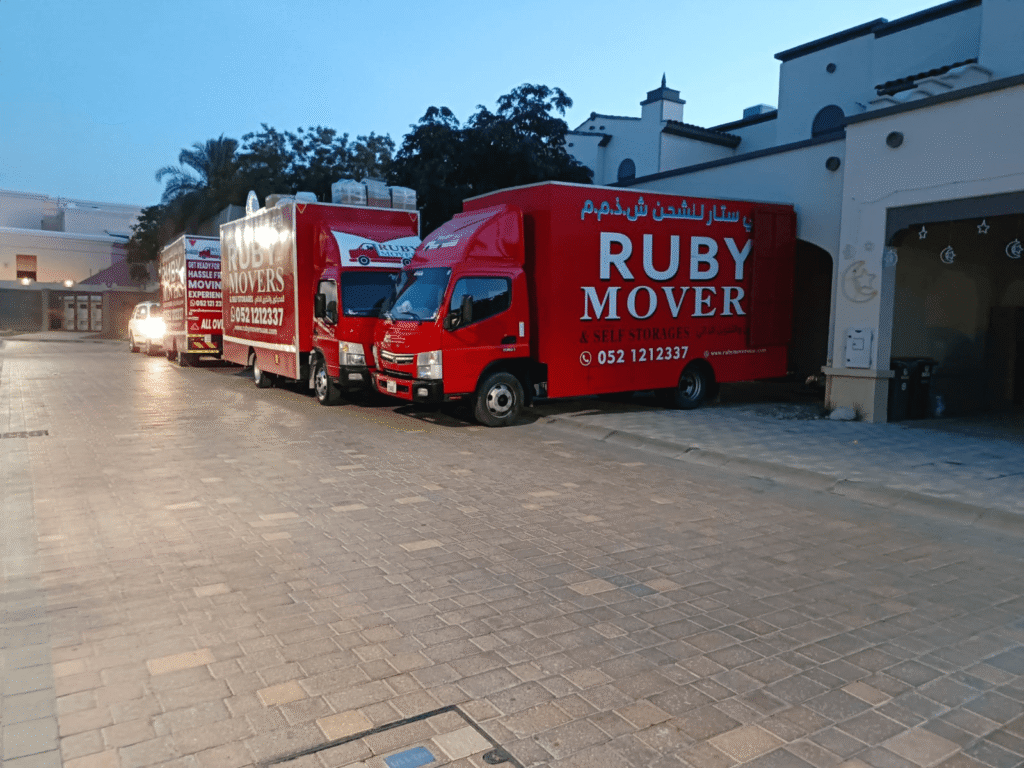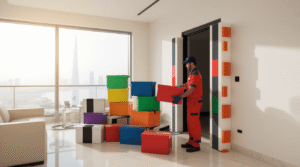Peak hours raise the cost and delay between Dubai and Sharjah. Salik Announces Implementation of Variable Toll Pricing Effective January 31, 2025.
Peak Hours (6:00 AM – 10:00 AM & 4:00 PM – 8:00 PM): AED 6 per crossing.
Off-Peak Hours (10:00 AM – 4:00 PM & 8:00 PM – 1:00 AM): AED 4 per crossing.
Late Night (1:00 AM – 6:00 AM 7 days a week): No tariff.
Sundays (excluding public holidays and events): AED 4 including peak and off-peak hours, excluding late night hours.
During the holy month of Ramadan, the variable pricing schedule will be adjusted to accommodate changes in travel patterns:
Peak Hours (9:00 AM – 5:00 PM): AED 6 per crossing.
Off-Peak Hours (7:00 AM – 9:00 AM & 5:00 PM – 2:00 AM): AED 4 per crossing.
Late Night (2:00 AM – 7:00 AM): No tariff.
Timing changes the bill. RTA announces an evening truck ban on Emirates Road toward Sharjah, effective 1 January 2025. Heavy vehicles face rerouting or rescheduling during that window. Compliance prevents stoppage. Managed tower control moves through permits and service elevators. Access is denied without a Move-In Permit. Security allocates the lift after approval.
This guide answers these questions quickly. How to share the service lift without conflict. How to avoid peak time costs with exact Salik windows and gates like Al Mamzar North and South.

What move day approvals unlock service lifts and access control
Move permits and pre-booked service elevators unlock access in managed towers. Apply 3 to 4 working days before the date, with approvals in 1 to 2 days.
Details for Inter City Movers on the Dubai ↔ Sharjah axis
Inter City Movers coordinates permits before lift sharing or neighbor notices. Nakheel’s Master Community Rules set controlled moving windows. Moving out occurs between 10:00 and 17:00 on the agreed date. Public holidays are excluded. Security supervises timing.
Emaar Communities confirms a Move-In Permit as a gatekeeping control. These declarations govern elevator allocation and loading bay use. Approvals typically take 1 to 2 days. Security checks the physical permit letter at the gate. These link to peak time avoidance. A confirmed permit allows off-peak scheduling for Dubai to Sharjah movers. Lift sharing works only after the permit is issued and the service elevator is reserved against a time block inside the house rules.
Worked compliance sequence for Dubai ↔ Sharjah moves
- Submit the Nakheel application 3 to 4 working days before the target date. Track approval 1 to 2 days later.
- Book the service elevator and loading bay once the permit is approved. Align the slot with 10:00 to 16:00 off-peak traffic where possible.
- Brief the crew on security checks. Carry the permit letter and stamped Emirates ID copies for all movers.
- Post neighbor notices that reference the approved window and the elevator booking to reduce complaints during lift runs.
- Start lift-sharing coordination at the concierge desk so overlapping residents are sequenced without conflict.
Why this matters to Inter City Movers
Permits govern elevator access, loading bays, and security checkpoints. Verified numbers give planners hard constraints. Early approval enables off-peak scheduling on the Dubai to Sharjah corridor, supports lift sharing without clashes, and reduces complaint risk from neighbors.
Cost surge windows for intercity movers on the Dubai ↔ Sharjah corridor
Inter-city movers face two predictable cost spikes. Toll pricing rises in fixed peak windows. Congestion stretches run time and shifts crossings into higher rates. Planning around these windows lowers toll spend and paid hours.
Verified toll windows and rates that raise direct costs
Salik sets AED 6 per crossing from 06:00 to 10:00 and 16:00 to 20:00 Monday to Saturday. Salik sets AED 4 per crossing from 10:00 to 16:00 and 20:00 to 01:00. Salik is free from 01:00 to 06:00 daily. Sunday is flat AED 4 except for the free window.
Gate geometry that changes the bill on Al Ittihad
Al Mamzar North and Al Mamzar South sit on the Dubai–Sharjah axis. Crossing both Mamzar gates in the same direction within one hour is charged once under the one-hour rule. This rule prevents duplicate charges on a single leg.
Traffic multipliers that push crossings into AED 6 periods
Dubai congestion increases travel time around peaks. The TomTom Traffic Index provides city averages and peak slowdowns for 2024. Longer run time moves scheduled AED 4 crossings into AED 6 windows on late jobs.
Worked scenarios for Dubai ↔ Sharjah movers
- Four gate hits in peak cost AED 48. Four gate hits in off-peak cost AED 32. The same route saves AED 16, which equals a 33 % reduction by timing only.
- Mamzar pair within one hour in the same direction costs once. A peak leg using South then North costs AED 6, not AED 12. Round-trip for the paired segments equals AED 12.
- Sunday plan at AED 4 all day except 01:00 to 06:00 free. A four-gate round trip equals AED 16 if both legs sit outside the free window. A return inside 01:00 to 06:00 removes the second leg charge.
Why does this matter to lift sharing and neighbor notices
Elevator slots aligned to 10:00 to 16:00 reduce lobby congestion and hit AED 4 windows. Neighbor notices tied to the approved window cut delays that risk peak exposure. Toll savings and fewer complaints follow from this alignment.
When do peak windows slow intercity movers on the Dubai ↔ Sharjah corridor
Peak windows slow trucks and vans from 06:00 to 10:00 and 16:00 to 20:00. The steepest slowdowns cluster near 07:00 to 09:00 and 17:00 to 19:00 on main corridors that link Dubai to Sharjah.
Quantified delay window for Dubai and its spillover to Sharjah
Dubai’s 2024 average travel time equals 18 minutes 3 seconds per 10 km with 25 % congestion. Morning rush takes 17 minutes 25 seconds per 10 km at 24 % congestion. Evening rush takes 23 minutes 23 seconds per 10 km at 60 % congestion.
Sharjah’s TomTom page confirms pronounced daytime peaks. The daily travel time curve rises after 06:00 and stays elevated until early evening, which aligns with Dubai’s evening surge. Corridor effects push Dubai ↔ Sharjah moves into longer runs during those windows.
Salik sets peak tolls in the same windows. Peak pricing applies from 06:00 to 10:00 and 16:00 to 20:00. Off-peak pricing applies from 10:00 to 16:00 and 20:00 to 01:00. Crossings are free from 01:00 to 06:00. Sunday is a flat AED 4, except for the free hours.
Planning cues that connect lift sharing, neighbor notices, and peak avoidance
- Begin service elevator runs inside 10:00 to 16:00 to align with lower congestion and AED 4 crossings. This avoids the 07:00 to 09:00 residual wave and the 17:00 to 19:00 surge.
- Stage first truck departure at 10:15 to 10:45. This timing reduces the chance of sliding into the 16:00 to 20:00 peak on the return. It also leaves a buffer for loading bay turnover.
- For heavy vehicles on Emirates Road toward Sharjah, avoid the evening restriction from 17:30 to 20:00 effective 1 January 2025. Re-time or reroute to prevent idle hours inside the peak.
Operational impact on Dubai ↔ Sharjah moves
Data shows a 6-minute gap per 10 km between evening rush and the all-day average in 2024. That gap compounds across multi-leg routes, pushes crossings into peak toll windows, and increases neighbor complaints when lift runs overrun booked slots.
How public transport upgrades help crew shuttling for intercity movers on the Dubai ↔ Sharjah corridor
RTA introduced Route E308 on 2 May 2025. The route connects Stadium Bus Station in Dubai with Al Jubail Bus Station in Sharjah. The one-way fare is AED 12 using Nol. The launch expands intercity capacity for crew transfers.
Route facts that affect staging and lift sharing
RTA states E308 integrates with existing modes, including the metro. Stadium Bus Station is adjacent to Stadium Metro on the Green Line, allowing rail-to-bus transfers for teams. The fare is fixed at AED 12 per passenger per trip.
Independent coverage confirms daily operation from Dubai to Sharjah with an AED 12 fare and an intercity focus. Launch articles list the endpoints and note congestion relief goals. These reports support planning assumptions for regular crew movements during move windows.
Daily commuters between Dubai and Sharjah now have a new public transport option. The Roads and Transport Authority (RTA) has introduced a new intercity bus route, E308. It connects Stadium Bus Station in Dubai to Al Jubail Bus Station in Sharjah.
E308 Schedule & Fare Details
Service hours: Daily from 5 AM to 11:30 PM
Frequency: Departures every 30 minutes
Fare: AED 12 for a one-way trip
Staging plan that links bus timing to lift sharing and neighbor notices
Use E308 to move packers to the pickup tower while trucks cycle the loading bay. Crews tap Nol and ride AED 12 each way. Crews avoid parking delays and reduce toll exposure on peak days. This supports on-time service elevator use and quieter corridors.
Applied steps
- Assemble crews at Stadium Metro to cut first-mile time. Walk to Stadium Bus Station for E308.
- Target arrivals inside 09:40 to 10:10, so load out starts at 10:15. This timing avoids the 07:00 to 09:00 residual peak and supports off-peak lift sharing. Correlate with Salik’s 10:00 to 16:00 AED 4 window for truck movements.
- Post neighbor notices that reference the booked window and crew arrival. Stable arrival reduces hallway dwell and complaints during service elevator cycles.
Planner notes
- Compare E308 against E307 and E307A when origins lie near Abu Hail or Deira. E307 and E307A also connect to Al Jubail at intercity fares around AED 10 to AED 12 according to route guides. Verify current fares on RTA before use.
- Check real-time trip options and any schedule changes on the RTA timetable and journey planner on the day.
Why E308 matters to intercity movers between Dubai and Sharjah
A predictable AED 12 fare enables budgetable crew shuttles. Stadium Metro interchange shortens transfer time and reduces parking load at towers. Reliable staff arrival protects service elevator slots and keeps loading bays turning on schedule. These effects support peak time avoidance and fewer neighbor complaints.

How common are traffic jams for intercity movers on the Dubai ↔ Sharjah corridor in 2025
Traffic jams are widespread in 2025. Survey data reports congestion exposure at 91 % in Dubai and 90 % in Sharjah, with 80 % of respondents saying conditions worsened versus 2024.
Measured prevalence and trend signals
TomTom’s 2024 city metrics frame the baseline. Dubai’s average congestion equals 25 % with 18 minutes 03 seconds per 10 km. Evening rush reaches 23 minutes 23 seconds per 10 km. Morning rush reaches 17 minutes 25 seconds per 10 km.
Sharjah’s TomTom page shows a daytime peak curve that rises after 06:00 and remains elevated into early evening. The pattern aligns with Dubai’s evening surge and intensifies cross-emirate runs.
What this means for intercity movers, Dubai ↔ Sharjah
When is rush hour in Dubai?
Dubai rush hour typically falls into two main weekday windows:
Morning: 6 a.m. to 10 a.m.
Evening: 4 p.m. to 8 p.m.
Worst congestion: 7 a.m. to 9 a.m. and 5 p.m. to 7 p.m., when traffic peaks and most commuters are on the road.
- Expect high jam probability during crew dispatch and truck rollouts. Peak windows at 06:00–10:00 and 16:00–20:00 align with the highest reported exposure.
- Plan elevator slots and loading bay turns to land in 10:00–16:00, where traffic metrics trend lower. This timing also matches off-peak tolls.
Lift-sharing sequence that prevents conflicts in managed towers on the Dubai ↔ Sharjah corridor
Permit approval precedes every elevator booking. Nakheel instructs residents to apply 3 to 4 working days in advance because approvals typically finish in 1 to 2 days. Moves are authorised only within fixed community hours after the permit is issued.
Required order for intercity movers using service elevators
- Apply for the move permit with documents on My Nakheel or web services. Submit 3 to 4 working days before the date. Typical approval takes 1 to 2 days.
- Book the service elevator after approval. Inform building security in advance so that an elevator is allocated for the move in multi-owned buildings.
- Protect the lift and corridors with pads and floor protection. Communities require orderly use and forbid obstruction of entrances and access roads during moves.
- Operate inside authorised hours only. Nakheel sets move windows at 9:00 to 17:00 Monday to Saturday and 10:00 to 17:00 on weekends. Public holidays are excluded.
- Clear security at the gate. Present the physical permit letter. Third-party movers present Emirates ID copies with the Nakheel security stamp for all crew.
- Sequence overlapping residents through security or concierge so lift runs do not collide. Community rules require advance notice to allocate the elevator.
Quantified controls that shape lift sharing and timing
- Lead time: Apply 3 to 4 working days before the date. Approval time: 1 to 2 days, typically. These figures enable off-peak scheduling for Dubai ↔ Sharjah runs.
- Move windows: 9:00 to 17:00 weekdays, 10:00 to 17:00 weekends. Holiday status: moving is not permitted on UAE public holidays.
- Allocation rule: Inform security in advance so that an elevator is allocated for the move in multi-owned buildings.
Practical notes for inter-city movers integrating peak time avoidance
- Align elevator slots to start between 10:00 and 16:00 to reduce lobby congestion and avoid morning residual peaks on E11 and E311. Keep a 15 to 30 minute buffer on each side of the slot for lift padding and bay turnover.
- Stage crews so the permit check and ID verification are completed before the slot starts. Present the permit letter and stamped IDs at the first security point.
- Keep entrances and access roads clear during runs. Community rules prohibit obstruction and assign liability for damage to common areas during shifting.
Service elevator sequencing for intercity movers on the Dubai ↔ Sharjah corridor
Managed towers release the service elevator only after a valid move permit. Nakheel advises submitting requests 3 to 4 working days before the date, with typical approval in 1 to 2 days. Moving activity follows community hours and security checks.
Compliance first: the exact order that reduces conflicts
- Confirm the authorised moving window listed in the community rules. Moves operate only within published hours and are not permitted on UAE public holidays.
- Present the permit at the gate for security verification. The Managing Agent controls access for movers and service providers through approved permits.
- Book the service elevator and the loading bay with building management after approval. Allocation depends on the permit and the community schedule.
- Protect common areas. Use padding for the lift car and floor protection. Community rules assign liability for shifting-related damage and prohibit obstruction of entrances and access roads.
- Sequence overlaps with concierge. Security coordinates orderly use so elevator runs do not collide during the authorised window.
Why this sequence works for peak time avoidance
Permit lead times and fixed hours allow planners to place elevator slots inside 10:00 to 16:00 off-peak road windows. That timing reduces the risk of hitting higher toll periods and shortens corridor delays on E11 and E311.
Operations data points to include on the job sheet
- Lead time: submit 3 to 4 working days before the date. Typical approval: 1 to 2 days. Portal: My Nakheel and online services.
- Authorised windows: move activity runs only within published hours. Holiday status: moving is not permitted on UAE public holidays.
- Access control: movers and service providers enter with approved permits issued by the Managing Agent.
Planner takeaways for Dubai ↔ Sharjah moves
- Permit first, then elevator and loading bay booking. This order unlocks access and prevents day-of refusals.
- Use the approval window to target mid-day slots for lift sharing and neighbor notices. This reduces lobby congestion and peak exposure on the corridor.
- Protect common areas and keep access roads clear. Compliance avoids stoppages and penalties during service elevator runs.
Cost and time planner for intercity movers on the Dubai ↔ Sharjah corridor
Salik applies variable pricing: AED 6 in 06:00–10:00 and 16:00–20:00, AED 4 in 10:00–16:00 and 20:00–01:00, free in 01:00–06:00. Sunday is AED 4 except the free window.
Quantified impacts on move day
- A four-gate round trip in peak costs AED 48; off-peak costs AED 32. Savings equal AED 16 or 33 percent for an identical distance.
- Mamzar one-hour rule: crossing Al Mamzar South and Al Mamzar North in the same direction within 60 minutes is charged once.
- Truck restriction: trucks are banned on Emirates Road toward Sharjah from 17:30–20:00, effective 1 Jan 2025.
- Permit control: Emirates Living states that a Move In Permit is required; access is denied without it.
Toll scenarios and cost comparison
| Scenario | Gate hits per leg | Time window | Effective hits rule | Rate per hit | Leg cost | Round-trip cost |
|---|---|---|---|---|---|---|
| Peak on Al Ittihad | 4 | 06:00–10:00 or 16:00–20:00 | None | AED 6 | AED 24 | AED 48 |
| Off-peak aligned to lift slot | 4 | 10:00–16:00 or 20:00–01:00 | None | AED 4 | AED 16 | AED 32 |
| Mamzar paired within 60 minutes | 3 effective* | Any | South plus North counted once | AED 6 or AED 4 | AED 18 or AED 12 | AED 36 or AED 24 |
| Sunday operations | 4 | All day except 01:00–06:00 | None | AED 4 | AED 16 | AED 16–32** |
| Free window leg | 4 | 01:00–06:00 | All free | AED 0 | AED 0 | AED 0–32*** |
* Effective hits are reduced by one when Mamzar gates are paired within one hour in the same direction.
** Dual leg cost depends on whether both legs avoid or include the free window.
*** If only one leg is free, the other follows its rated window.
Schedule integration for lift sharing and neighbor notices
- Confirm the permit, then book the service elevator and bay. Emirates Living requires a valid Move-In Permit for access.
- Target 10:00–16:00 for loading and first roll to match AED 4 crossings and lower building traffic.
- Check Mamzar pairing when using Al Ittihad. Apply the one-hour rule to avoid duplicate charges. Record expected pairings on the job sheet.
- Avoid evening truck restriction on Emirates Road toward Sharjah for heavy vehicles by retiming dispatch.
- Publish neighbor notices that mirror the approved elevator window to reduce hallway dwell and prevent overrun into peak toll periods.
- Use Route E308 to shuttle crews: Stadium Bus Station ↔ Al Jubail, AED 12 one way, effective 2 May 2025. Pair with Stadium Metro for staging.
Conclusion | Inter City Movers Dubai ↔ Sharjah: lock permits, time crossings, keep neighbors informed

Peak costs are predictable. So are the fixes. Confirm the Move In Permit, book the service elevator, and align the slot with the AED 4 off-peak window. Crews arrive on time. Lobbies stay clear. Bills fall.
Gate geography matters. Al Mamzar North and South can count once per direction within one hour. That rule reduces duplicate charges. Switching a four-gate round trip from peak to off-peak cuts tolls by about one-third.
Policy timing matters. The evening restriction on the Emirates Road toward Sharjah increases the risk for heavy vehicles. Retiming avoids idling and keeps crossings outside the AED 6 period. Using Route E308 at AED 12 per trip stabilizes crew arrivals.
The neighbor notices the completion of the plan. Notices tied to the approved window reduce hallway dwell and help lifts turn on schedule. The result is fewer complaints, faster handovers, and a smoother Dubai ↔ Sharjah move.
FAQs
What single change cuts the largest share of toll cost
Move during the AED 4 off-peak window of 10:00 to 16:00 or 20:00 to 01:00. A four-gate round trip drops from AED 48 to AED 32. This equals about 33 percent savings.
When are crossings free for intercity movers
Crossings are free from 01:00 to 06:00 daily. Use this window for late returns when the building schedule allows and when the neighbor’s notice covers the time.
How do the Mamzar gates affect the total?
If a truck crosses Al Mamzar South and then Al Mamzar North in the same direction within one hour, only one charge applies. Record the pairing on the job sheet.
What must be secured before any lift-sharing plan?
A valid Move-In Permit. Security allocates the service elevator only after approval. Without the permit, access is refused, and the schedule collapses.
Which times create the longest delays on the corridor?
Delays peak between 07:00 and 09:00 and again between 17:00 and 19:00. Plan to load out to start around 10:15 to miss the morning tail and to avoid the evening build-up.
How do evening truck restrictions change dispatch?
Heavy vehicles traveling toward Sharjah face an evening prohibition window. Retiming or rerouting prevents idling, overtime, and AED 6 crossings.
What public transport option supports crew staging?
Route E308 links Stadium Bus Station in Dubai with Al Jubail in Sharjah. The one-way fare is AED 12 using Nol. It connects with Stadium Metro for easy transfers.
What goes into a neighbor notice that reduces complaints?
List date, start time, end time, service elevator number, loading bay, and a mobile contact. Post at least forty-eight hours ahead and log it with the concierge.
How should planners tie building slots to road pricing?
Book the elevator from 10:00 to 16:00, where rules allow. This pairs lower lobby traffic with AED 4 tolls and keeps returns clear of the evening surge.
Which documents should crews carry at security?
The printed permit and crew identification. For managed communities, include Emirates ID copies for each mover and any access stamps required by security.





